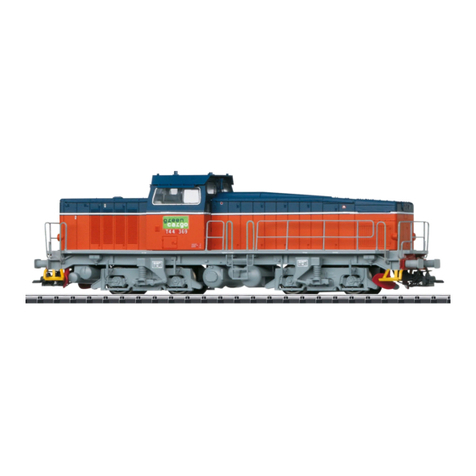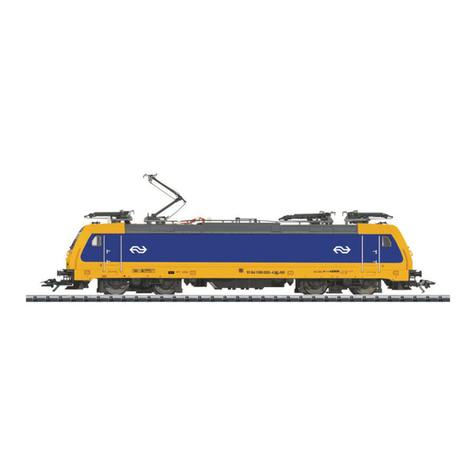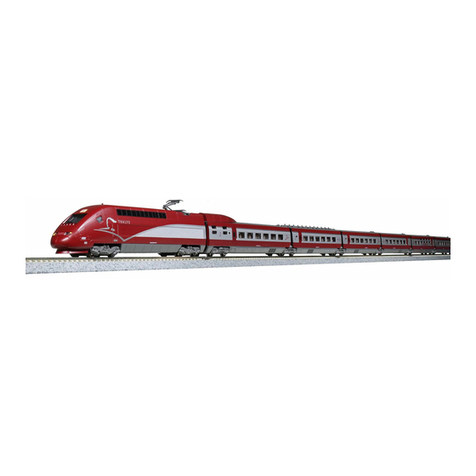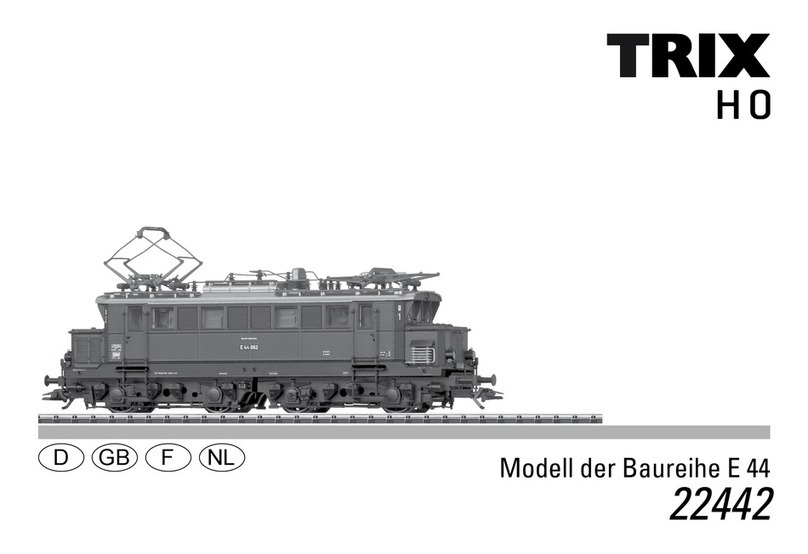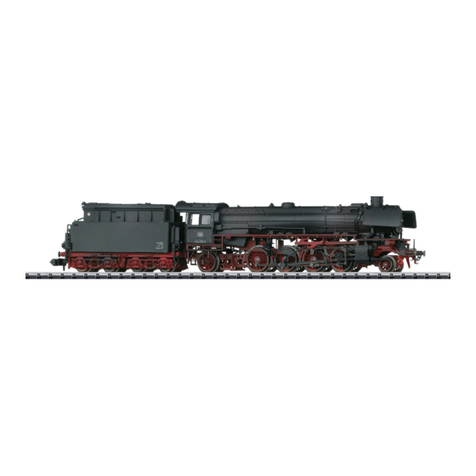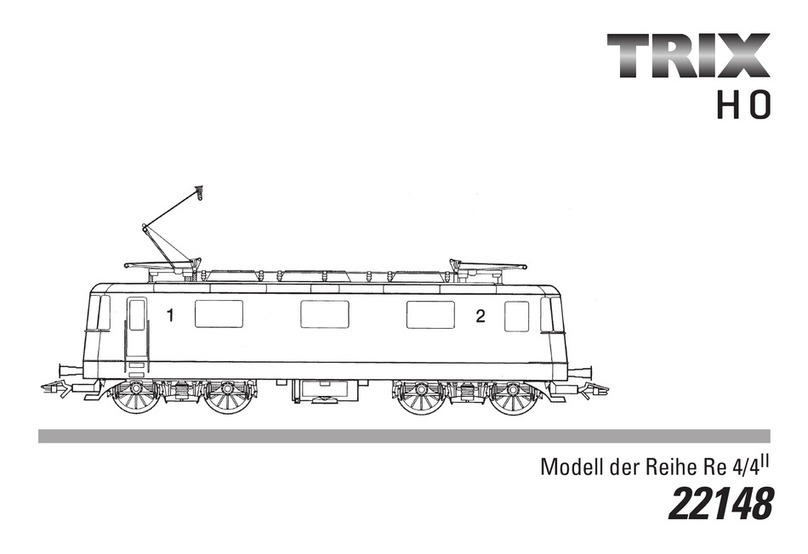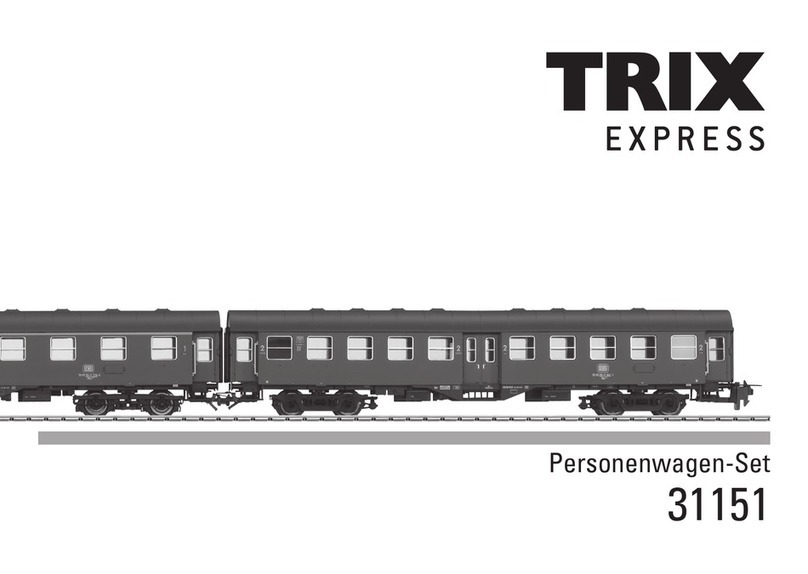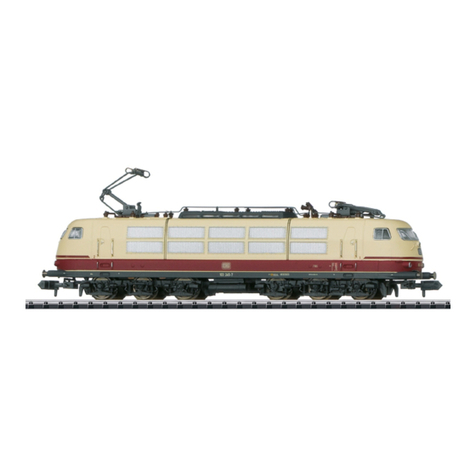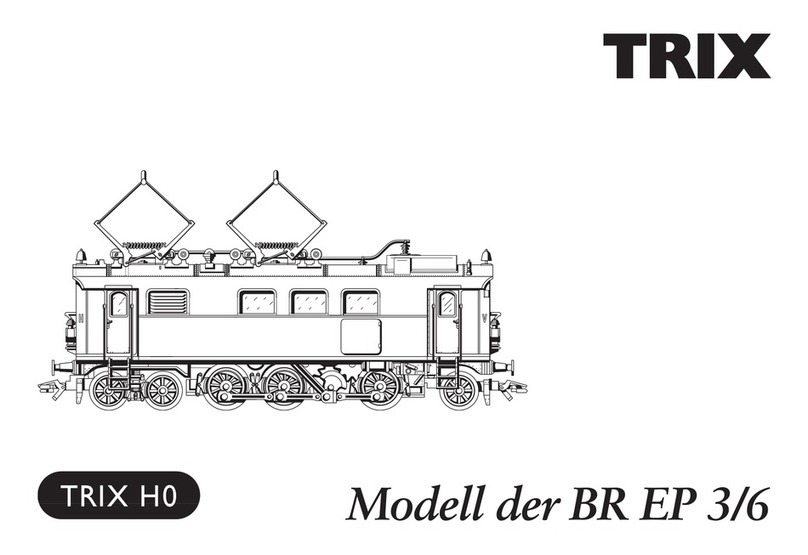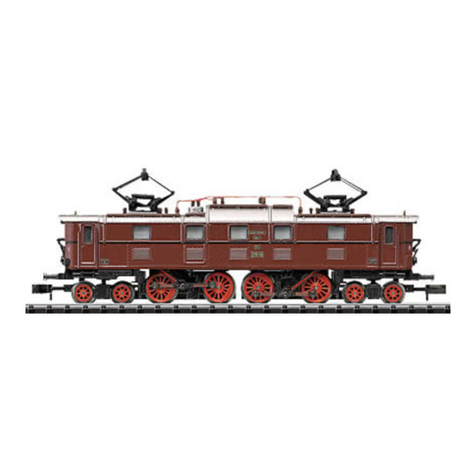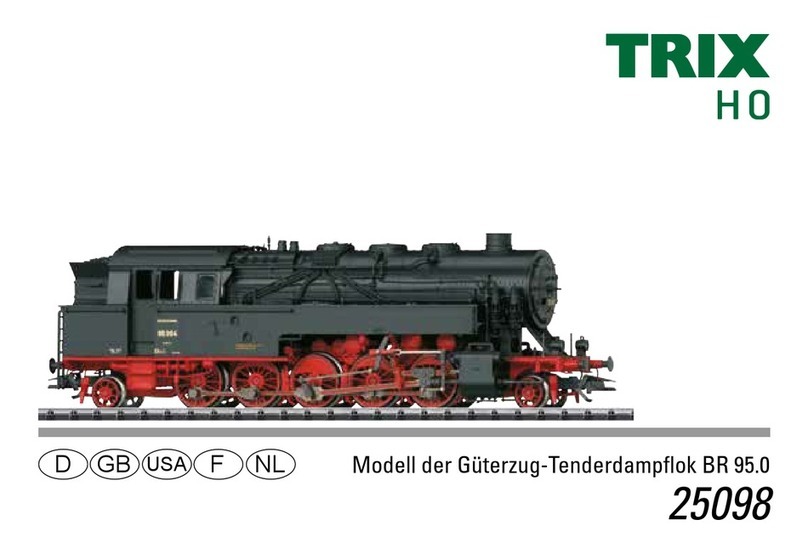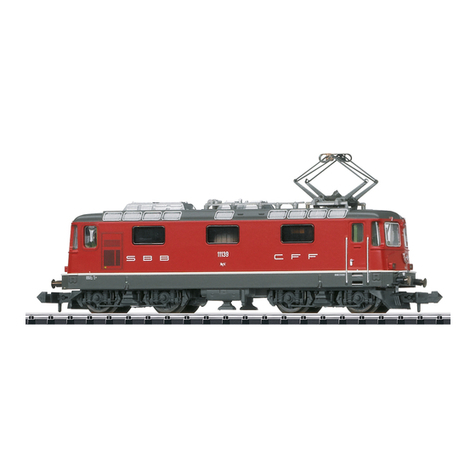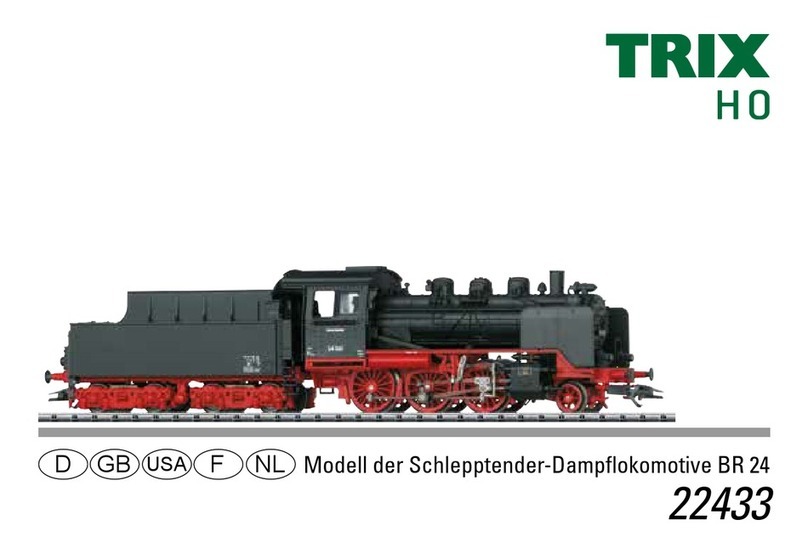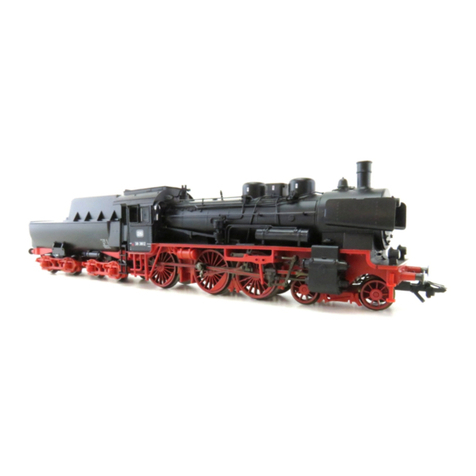
5
Information about the prototype
In September of 1994, ABB Henschel presented its new
locomotive concept “Eco 2000” whose main components
had been tested since 1992. The essential new features
were the following: dispensing with relay technology,
flexi-float trucks with single wheel set control that particu-
larly saved on track wear and an integrated drive system,
an “integrated locomotive bus” that saved wiring. Other
new features were the MICAS-S processor-controlled
guidance system for locomotive control and diagnosis as
well as a modular superstructure tailored to the customer
and based on tested subassemblies. In November of 1994,
the DB ordered the replacement for the
class 103 in EC/IC/IR service, 145 four-axle units capable
of 220 km/h / 137 mph from the “Eco 2000” family with the
new designation 101.
From July 1, 1996 to June 18, 1999 ADtranz delivered (after
its takeover of ABB Henschel) road numbers
101 101-145 that are still to be seen exclusively pulling IC
and EC trains. Now and then, they may even pull a freight
train. With its 6,400 kilowatts / 8,582 horsepower the 101
represents a real all round workhorse. Its smooth boxy
body is admirably suited for the application of advertising
overlays. Several units are thereby always functioning as
mobile advertising mediums and they brighten up the red-
white monotony on the German railroad somewhat.
Informations concernant le modèle réel
En septembre 1994, ABB Henschel présenta son nouveau
concept d’engin moteur « Eco 2000 » dont les composants
principaux avaient été testés depuis 1992.
Les innovations principales consistaient en la suppression
de la technique relais, en des bogies Flexifloat à commande
d’essieu individuel et entraînement intégré ménageant par-
ticulièrement la voie, un «bus véhicule intégré » permettant
d’économiser du câble, le système de gestion MICAS-S pilo-
té par microprocesseurs pour la commande et le diagnostic
du véhicule ainsi qu’en une structure modulaire adaptée au
client basée sur des éléments de construction éprouvés.
Pour remplacer la série 103 dans le trafic EC/IC/IR, la DB
commanda en novembre 1994 au total 145 machines issues
de la famille « Eco 2000 », à quatre essieux et aptes à rouler
à 220 km/h ; ces machines portaient le nouveau numéro 101.
Du premier juillet 1996 au 18 juin 1999, ADtranz (après la
reprise de ABB Henschel) livra les 101 101-145, que l’on
peut voir presque exclusivement en tête de train IC et EC.
De temps en temps, elles ont même le droit de remorquer un
train marchandises. Avec ses 6400 kW, la 101 représentait
une machine vraiment universelle. Sa superstructure lisse
se prête également particulièrement bien pour y appliquer
des autocollants publicitaires. Ainsi, quelques machines
servent toujours de supports publicitaires roulants et
égaient un peu le paysage monotone rouge et blanc des
rails allemands.
